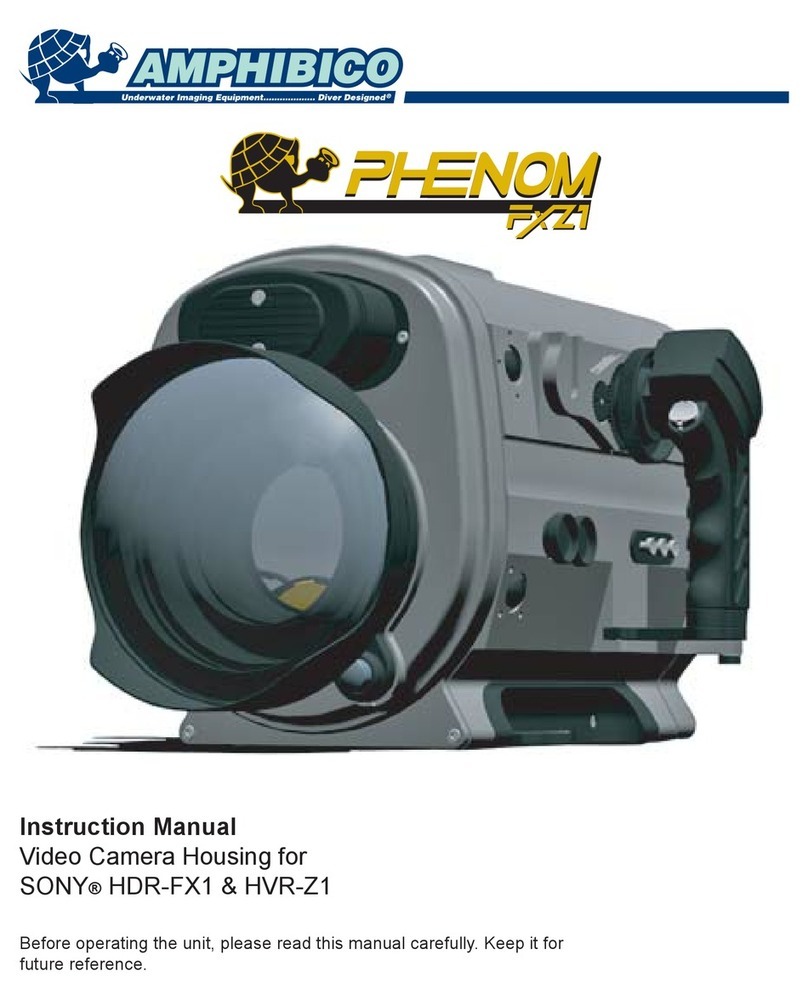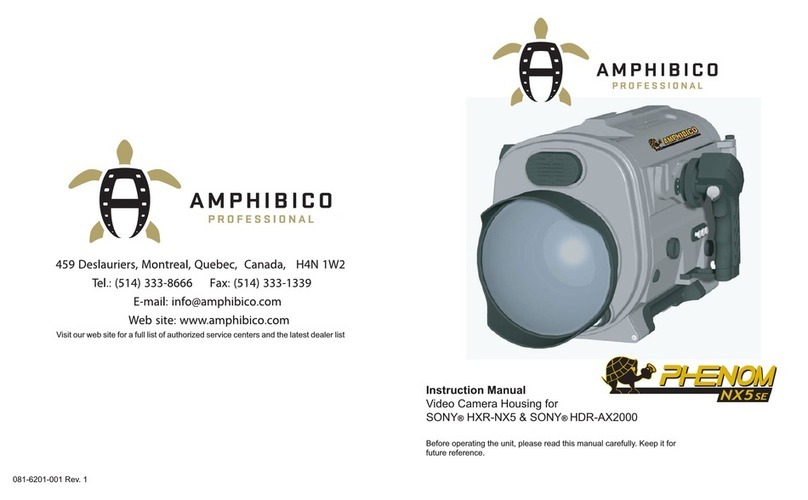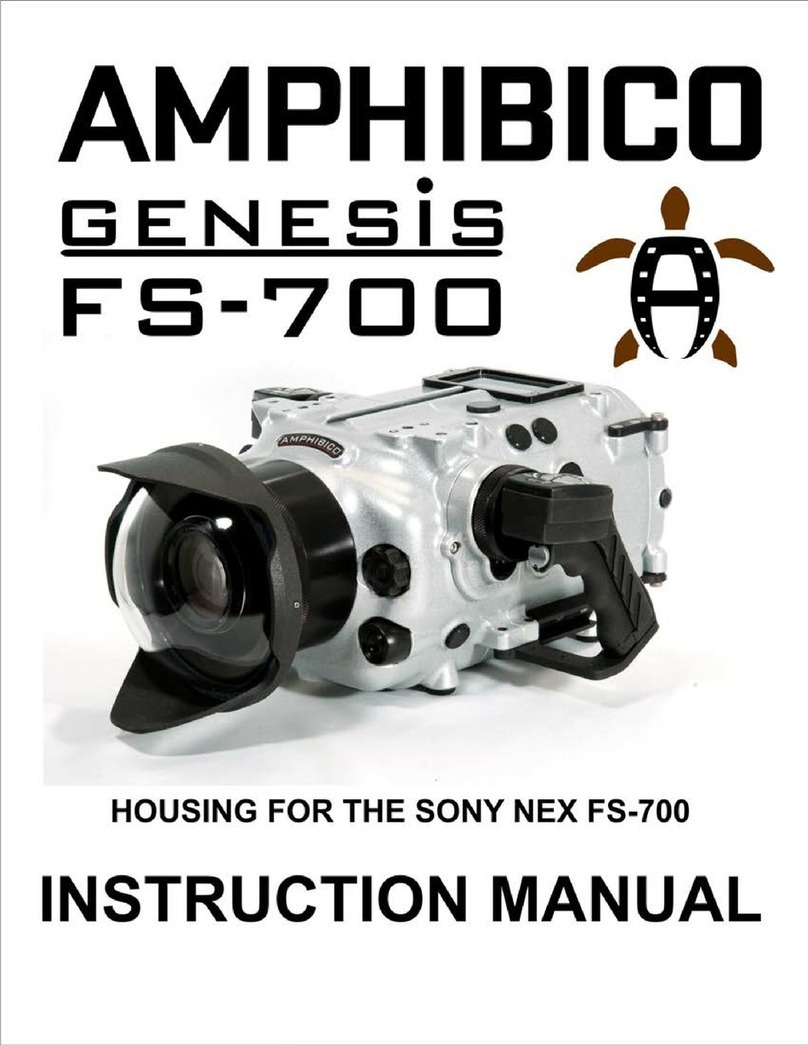AMPHIBICO Video Camera Housing User manual
Other AMPHIBICO Camera Accessories manuals

AMPHIBICO
AMPHIBICO Dive Buddy EVO HD User manual

AMPHIBICO
AMPHIBICO Handycam HDR-FX1 User manual

AMPHIBICO
AMPHIBICO VH-2000 Operating and maintenance manual

AMPHIBICO
AMPHIBICO Dive Buddy EVO HD User manual

AMPHIBICO
AMPHIBICO Genesis User manual

AMPHIBICO
AMPHIBICO PHENOM NX5 SE User manual

AMPHIBICO
AMPHIBICO genesis fs-700 User manual

AMPHIBICO
AMPHIBICO Phenom FX21 User manual

AMPHIBICO
AMPHIBICO HD Wave WAVH0760 User manual
Popular Camera Accessories manuals by other brands

Trojan
Trojan GC2 48V quick start guide

Calumet
Calumet 7100 Series CK7114 operating instructions

Ropox
Ropox 4Single Series User manual and installation instructions

Cambo
Cambo Wide DS Digital Series Main operating instructions

Samsung
Samsung SHG-120 Specification sheet

Ryobi
Ryobi BPL-1820 Owner's operating manual





















